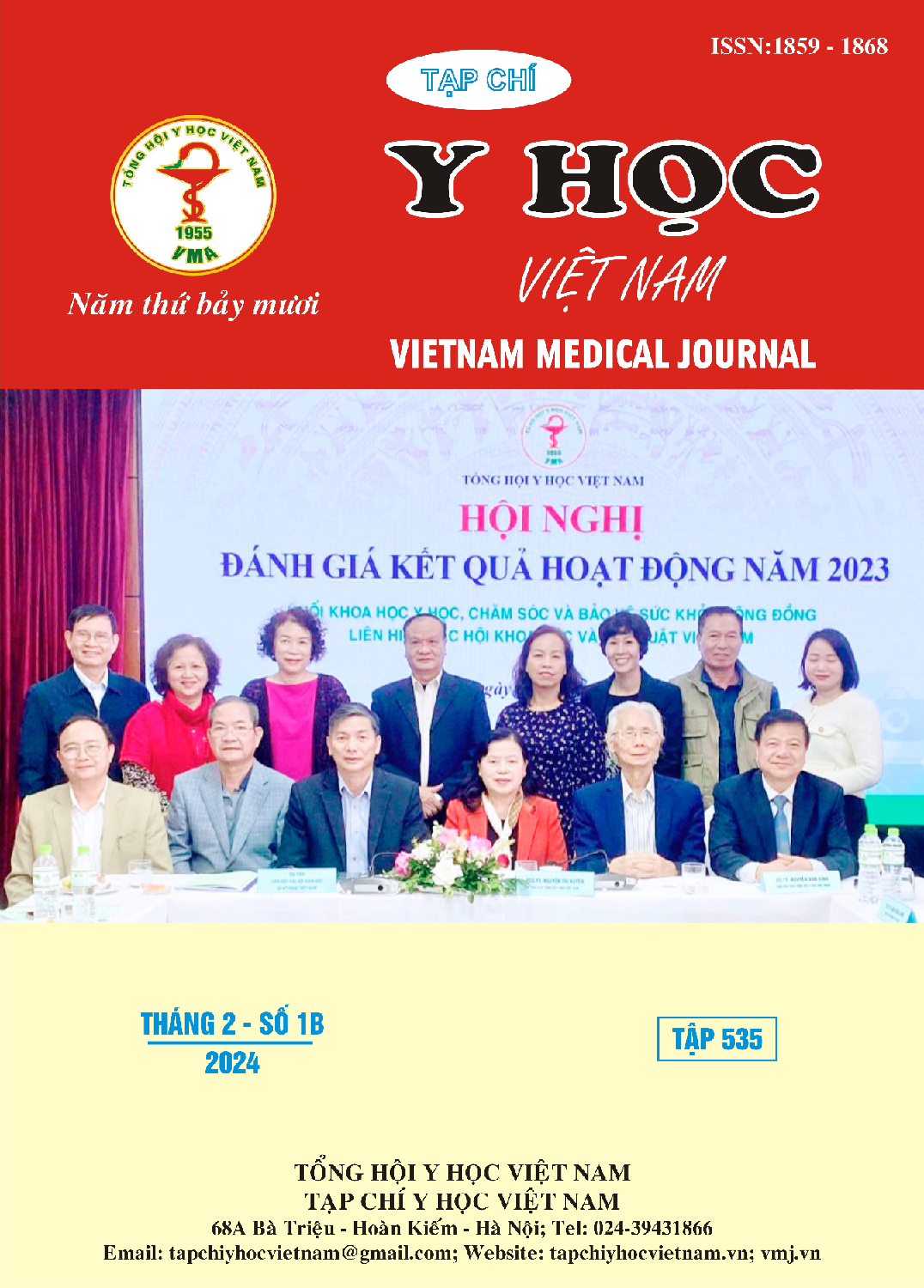ASSESSING MUSCLE STRENGTH BY HANDGRIP DYNAMOMETRY IN ELDERLY PATIENTS WITH CHRONIC HEART FAILURE AT THONG NHAT HOSPITAL
Main Article Content
Abstract
Objectives: Determine the rate of handgrip strength reduction in elderly patients with chronic heart failure hospitalized at Thong Nhat Hospital. Identify relationship between clinical and paraclinical characteristics (age, gender, body mass index, comorbidities, NYHA functional class, NT-proBNP) in elderly inpatients with chronic heart failure and the status of reduced handgrip strength. Methods: A descriptive cross-sectional study was conducted on 124 inpatients aged ≥ 60 with chronic heart failure at Thong Nhat Hospital from December 2022 to March 2023, measuring handgrip strength using the Camry Smedley electronic hand dynamometer. Results: The rate of reduced handgrip strength in elderly patients with chronic heart failure was 78%, with 50% in males and 47% in females. The reduction rates of the age groups were: 26% for 60–69 years old, 33% for 70–79 years old, and 38% for ≥ 80 years old. Factors related to reduced handgrip strength in elderly patients with chronic heart failure were: age – for every 1-year increase, the risk of reduced handgrip strength increased by 1,09 times (95% CI: 1,02–1,16; p = 0,013), body mass index – overweight patients had a 0,33 times lower risk of reduced handgrip strength compared to those with a normal BMI (95% CI: 0,12–0,92; p = 0.034), NYHA functional class – NYHA III patients had a 3,64 times higher risk of reduced handgrip strength compared to NYHA II patients (95% CI: 1,34–9,87; p = 0,011). Conclusion: The rate of reduced handgrip strength in elderly patients with chronic heart failure was 78%. Advanced age, body mass index, and NYHA functional class were relation factors associated with reduced handgrip strength in elderly patients with chronic heart failure
Article Details
Keywords
handgrip strength, chronic heart failure, elderly
References
2. Đặng Thanh Huyền. Nghiên cứu tình trạng hạn chế chức năng và các bệnh lý đi kèm trên người cao tuổi suy tim mạn nội viện. Luận văn thạc sĩ Dược học. Đại học Y dược thành phố Hồ Chí Minh. 2017
3. Trần Đăng Khương. Khảo sát tỉ lệ và tiên lượng ngắn hạn của thiếu cơ ở người bệnh cao tuổi có bệnh lý tim mạch nội viện. Luận án bác sĩ nội trú. Đại học Y dược TP. HCM. 2019
4. Yamamoto S, Yamasaki S, Higuchi S, et al. Prevalence and prognostic impact of cognitive frailty in elderly patients with heart failure: sub-analysis of FRAGILE-HF. ESC Heart Fail. 2022; 9(3): 1574-1583. doi: 10.1002/ehf2.13844
5. Parahiba SM, Spillere SR, Zuchinali P, et al. Handgrip strength in patients with acute decompensated heart failure: Accuracy as a predictor of malnutrition and prognostic value. Nutrition. 2021; 91-92: 111352. doi: 10.1016/ j.nut.2021.111352
6. Souza MB, Souza Andrade AC, Lustosa Torres J, et al. Nationwide handgrip strength values and factors associated with muscle weakness in older adults: findings from the Brazilian Longitudinal Study of Aging (ELSI-Brazil). BMC Geriatr. 2022; 22(1): 1005. doi: 10.1186/s12877-022-03721-0
7. Jeong SM, Choi S, Kim K, et al. Association among handgrip strength, body mass index and decline in cognitive function among the elderly women. BMC Geriatr. 2018; 18(1): 225. doi: 10.1186/s12877-018-0918-9
8. Duarte RP, Gonzalez MC, Oliveira JF, et al. Is there an association between the nutritional and functional parameters and congestive heart failure severity? Clin Nutr. 2021; 40(5): 3354-3359. doi: 10.1016/j.clnu.2020.11.008


